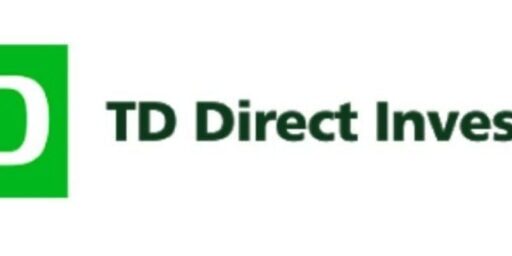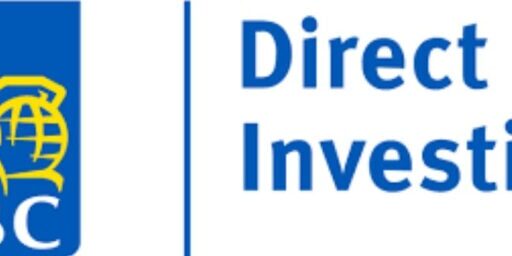Building a Simple Low-Cost Indexed ETF Portfolio in USD
With recent articles about all-in-one ETFs and withholding taxes on ETFs in registered accounts, I’ve been getting questions about if there are USD based all-in-one ETFs, and if not, what are the most efficient USD ETFs to own?
There are a number of readers who make their money in USD, and there are some advantages to using USD for your investments. Namely, to reduce withholding taxes on ETFs within registered accounts.
Wait what? Withholding taxes within a tax-sheltered account?
Here is a high-level summary of withholding taxes on ETFs in registered accounts (you can read the full article here):
While holding US stocks directly in an RRSP gets preferential tax treatment, did you know that an ETF that holds underlying ETFs does not qualify for the tax exemption? So essentially with the additional embedded tax, you are paying a higher MER than you think!
International equities would be subject to withholding tax in an RRSP/TFSA, and gets even larger if the international ETF holds underlying ETFs (Yes, two levels of withholding tax). The bright side is that the more popular international equity ETFs like iShares XEF and Vanguard VIU hold individual stocks, which results in only one level of withholding tax.
Withholding taxes can really add to the overall MER of your portfolio – especially in registered accounts. No longer is the advertised MER of XUU (covers US market) 0.07%, but after withholding taxes in an RRSP, it’s 0.39%!
Reducing the Added Expense of Converting CAD to USD
As mentioned above, you can further avoid withholding taxes and reduce your MER if you are willing to transfer your CAD to USD and buying the US versions of the ETF. For example, since XUU (covers US index in CAD) is an ETF that holds underlying ETFs, it will be hit with non-recoverable withholding taxes in a TFSA/RRSP.
So buying a USD ETF that holds stocks directly, like VTI, would be much more efficient. In an RRSP, this will result in a difference of 0.39% total MER for XUU vs. 0.04% total MER for VTI. In real money, that’s $35/year for every $10k in your RRSP. That’s not much now, but if your RRSP grows to $500k, that’s $1,750/year. That’s almost enough to fly the family to Florida annually!
But, as you probably already know, there is an added cost of doing foreign currency exchange (FX) where most discount brokerages charge an extra 2.5% (or more) on the conversion. Converting $10,000 CAD into USD, it would be an additional $250 which equates to about 25 trades with most brokerages. Or imagine doing FX on $100k, that would be an added cost of $2,500!
Fortunately, there are some strategies to reduce the 2.5% surcharge on FX conversions and it’s called the Norbert’s Gambit.
At a high-level, this strategy involves buying/selling equities that are listed on BOTH the Canadian and US exchanges (ie. interlisted stocks). Essentially, you buy an equity in one exchange, then sell the exact same equity on the other exchange.
For example, Horizon ETFs has created a product (DLR/DLR.U) specifically to move money efficiently between CAD and USD.
This is how we do the DLR/DLR.U conversion with our accounts at Questrade.
- Buy the DLR ETF in CAD;
- Ask the discount brokerage to journal your CAD DLR position to USD DLR.U (usually by phone/online chat and free of charge, others are automatic); and,
- Sell DLR.U in the US market.
Using DLR for your FX will result in a total fee of about 0.50% plus the cost of commission. With Questrade, there is no commission to buy ETFs, but a commission to sell ($4.95). Using the same $100k example above, instead of paying $2,500, you would pay $505. Or, instead of paying $250 on $10k, you would pay $55.
If you want to get super efficient, you can use a high-volume interlisted stock, like TD or RY to buy on one exchange and sell on another. This cost will effectively be the trading commission only. More details in this post about Norbert’s Gambit.
Simple Low-Cost Index ETF Portfolios in USD
As you can see, owning US-listed ETFs can have significantly lower fees due to reduced withholding taxes.
With super simple ETFs available in CAD like Vanguard’s VGRO/VBAL; iShare’s XGRO/XBAL; or BMO’s ZGRO/ZBAL, is it worth switching to a US equivalent?
To start, the closest US equivalent to all-in-one ETFs available to Canadians would be to buy an all-world ETF, or to buy the US index plus an international index.
Portfolio Option 1:
- Vanguard Total World Stock ETF (VT)
- Total MER 0.22% in RRSP
This will give you market cap weighted index exposure to world equities with over 8000 stocks (including Canada with 5% weighting). Essentially, this single ETF will hold all of the largest companies in the world. Similar to iShares XAW (CAD), except that you would need to add a Canadian ETF.
From a price perspective, iShares XAW costs 0.58% in an RRSP which is 0.36% more expensive than VT. For larger RRSP portfolios, it may be worth switching from XAW to VT.
Portfolio Option 2:
- Vanguard Total Stock Market ETF (VTI)
- Vanguard Total International Stock ETF (VXUS)
- Assuming 60/40 split, the total MER is approximately 0.17% within an RRSP
Portfolio Option 3:
- iShares Core S&P Total US Stock Market ETF (ITOT)
- iShares Core MSCI EAFE International ETF (IEFA)
- iShares Core MSCI Emerging Markets ETF (IEMG)
- Assuming 60/30/10 split, the total MER is 0.18% within an RRSP
Depending on the amount of control you need in your portfolio, then options 2 and 3 may be of interest. Personally, I like the idea of owning a single ETF to get global coverage at a relatively low cost.
Final Thoughts
Withholding tax on ETFs can be a complex subject, but I like to keep it as simple as possible by focusing on the solution. That is, if you want the ultimate efficiency in your ETF portfolio within your RRSP, then it’s best to own US-listed ETFs for your ex-Canada coverage.
While converting your CAD to USD can be pricey, this cost can be significantly reduced by using a strategy called Norbert’s Gambit. This strategy involves buying/selling equities that are listed on BOTH the Canadian and US exchanges (ie. interlisted stocks).
Finally, there are a few options to build your portfolio with US-listed ETFs. Out of the three options above, I prefer either a single ETF to index the world, or I could even stretch to a couple of ETFs for a little more control. Both offer a better overall MER (0.18%-0.22%) than something like the popular iShare’s XAW (0.58%).
What do you think? Are the savings worth the fuss of investing in USD?
I've Completed My Million Dollar Journey. Let Me Guide You Through Yours!
Sign up below to get a copy of our free eBook: Can I Retire Yet?











What about all in one ETFs listed on the NYSE in USD like AOR?
Good find TD, I did not know about AOR ETF. Looks like a 60/40 all-in-one ETF and seems ok providing that you are comfortable with US bonds. May be a psychological thing, but I would go prefer to go with something like VT, or VTI/VXUS, then add Canadian bonds if desired.
Do you own AOR?
Yes, I do own some AOR in USD in my RRSP. XGRO on the CAD side so I figure the US Bonds provide some bond diversification, although that may not really matter.
Thanks again for the AOR idea!
Do you know if dividends paid by USD ETF’s like VTI, VT or VOO when held outside a RRSP or TFSA are subject to TXPDIV or just DIV in a USD trading account? I believe if it is TXPDIV the filing of taxes is much more paperwork rather than just the DIV. I know it is subject to 15% withholding tax, but I believe you get that back from a tax break when filing taxes.
Can you elaborate? I’ve never heard of TXPDIV.
Yes, actually I think TXPDDIV may be brokerage specific. I think it means distribution rather than dividends. (DIV) Maybe used for return of capital or trust units such as REITS. It is not the standard dividend DIV paid.
I use TD Direct Investing for my brokerage accounts.
My basic question is what are your thoughts on USD ETF’s on a non-registered account? I have a USD non-registered account with about 20 common stocks such as JNJ, PG, YUM, DIS, etc, I am looking to add an ETF such as VTI or VOO but am hesitant. This is because when I held REITS in a CAD non-registered account I had to do extra paperwork other than the standard T5 form. Every time the dividends were paid they were TXPDDIV rather than DIV.
Likewise I have VFV.TO and VUN.TO in my TFSA and RRSP account , they also distribute in the form of TXPDDIV rather than DIV.
Would you think there would be extra paperwork if I held VTI in a non-RRSP/TFSA acccount? If so I’d rather not use ETF’s and just stay with common stocks since the tax paperwork would be much easier.
ETFs generally require a little more paperwork in non-registered accounts, which is one of the reasons why I don’t own any ETFs in taxable accounts. :) If you have any registered space left, I would put any international holdings in tax-sheltered accounts. Here is a more detailed article:
https://milliondollarjourney.com/portfolio-allocation-rrsps-tfsas-and-taxable-accounts.htm
Thanks very much. I really dislike doing more paperwork at tax time, so I won’t be adding ETF’s to my non-registered accounts. Stock picking is harder, but at least it simplifies the tax process. :)
Hi FrugalTrader,
I believe the current MER of XAW is 0.22% rather than 0.58%. However, I still think it’s worth doing Norbert’s Gambit to convert to USD, especially on larger portfolios, as it’s easy enough to just email Questrade (or whatever brokerage you happen to use) and ask them to journal your CAD over to USD.
GMMT
Yes the MER on XAW is 0.22% but when held in an RRSP, the MER is 0.58% after counting withholding tax.
Is the 0.58% MER also the same in a TFSA?
Yes, XAW in TFSA is also 0.58%. This article will help with other ETfs:
https://milliondollarjourney.com/the-real-mer-on-etfs-foreign-withholding-taxes-on-etfs.htm